
The cry of ‘timber’ and the crashing of rainforest trees evokes a romanticised ideal of rugged, bearded men hacking their way through an impenetrable ‘jungle’ with their bullock teams and of loneliness, hardship and deprivation in their search for timber.
In the pioneering days of Australia, the ‘Cedar Cutters’ frequently preceded more permanent settlers and were often responsible for the ‘opening-up’ of new areas for the ever-expanding European arrivals. Unfortunately, it also resulted in the sad over exploitation of our rainforests with the most precious of rainforest trees, the legendary Red Cedar (Toona ciliata), or ‘Red Gold’ as it was known, being cut to commercial extinction by the beginning of the 20th century.
As early as 1802 (only 14 years after European arrival), Governor King issued restrictions on the felling of Red Cedar without authority. This didn’t stop the decimation of these magnificent trees and they were systematically felled wherever they were found. Consequently, apart from the occasional magnificent specimen that was spared the axe and those in the most inaccessible of locations, the Red Cedar you find growing today were either flawed, too small to be felled at the time, are recent regrowth or have been planted. It will be another couple of human generations before these leftovers attain the awe-inspiring status of their forebears. In exceptional circumstances these trees attained heights of 60 metres, but more typically grew to 45 metres.
Looking at my Grandfather’s Red Cedar table, it’s not difficult to see why this wood was so prized as a cabinet timber and veneer. The wood is a magnificent, deep, rich red and you can almost lose yourself staring into its depths. The colour of the wood alone makes it a wood worker’s dream, but Red Cedar has a couple of other attributes that made it so desirable. The wood is soft, making it easy to work and is pest and water-resistant.
The most accessible of the trees grew in fertile, deep, well-drained basalt soils east of the Great Dividing Range, primarily along rivers and creeks from southern NSW to northern Queensland. This allowed the cedar cutters to take advantage of one of its other attributes – it floated. The transport of cut logs was greatly simplified as they were rafted down these ready-made water highways.
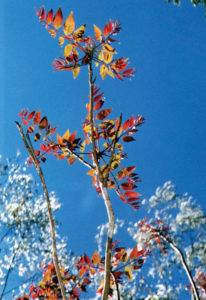
Just as the timber from the related Mahogany’s of Africa and India were becoming scarce due to over exploitation, Red Cedar was able to fill the void in nineteenth century England. This trend continued in colonial Australia, so even as Red Cedar was being shipped back to England in the holds of convict ships, it was also being increasingly used in Australia to build and adorn the ever-growing number of houses and public buildings.
Red Cedar is one of the few deciduous native trees in Australia and even this fact works against it. In the intact rainforest, Red Cedar was able to disappear into the background, but come spring, having earlier shed its leaves to see out the dry winter, their flush of beautiful coppery-red leaves (see image below) made them stand out like signposts to the cedar cutters. This new growth of compound leaves, with a distinctive asymmetrical base then turned bright green to fuel the growth of this rainforest giant.
To help stabilise the immense size of these trees, most large Red Cedars are flanged or buttressed. At this time their trunk heads for the heights of the rainforest canopy with the first branches finally emerging high above the ground. The bark of older cedar is a scaly grey or brown and is often shed in oblong pieces giving the trunk a distinctive plated appearance.
The final twist of the knife in the story of the Red Cedar is the reason why so few of those trees found today will mirror their forebear’s spectacular growth. It is also the reason why Red Cedar, despite being easily propagated, fast growing and quite hardy once established, is not being grown to any extent as a timber tree in Australia. The tree has a little understood relationship with a rather non-descript brown moth, the Cedar Tip Moth or Shoot-borer (Hypsipyla robusta) in Australasia and Asia, whose larvae attack the growing tip of the plant. In young Red Cedar this invariably includes the dominant growing stem tip (the apical meristem) that is responsible for stem elongation. Many centimetres of new growth can be destroyed as the larvae munch into the succulent sapwood. The destruction of this dominant growing tip triggers otherwise dormant lateral (axillary) buds to grow, resulting in a twisted and sometimes multi-stemmed tree developing.
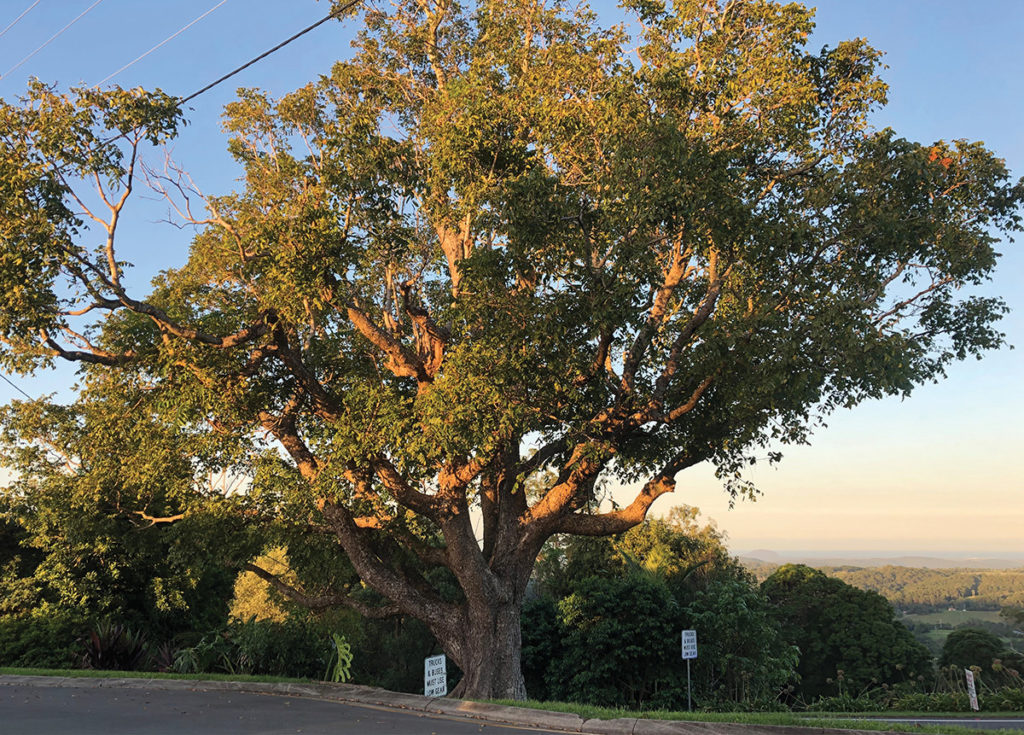
Borer attack of young trees rarely causes tree death, but it does result in deformed trunks that are of no commercial value. Interestingly, Red Cedar gives off a chemical attractant that the female moths are able to home in on from many kilometres away. It is also believed that a combination of the destruction and disruption of the natural ecosystem, coupled with the extra light that seedlings are exposed to when grown in disturbed forest, revegetation areas or forestry plots, results in the moth being able to single out young cedar.
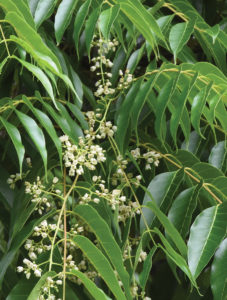
In an intact forest, the majority of young Red Cedar are able to escape the moth until such time that they are too large for moth attack to make an impact on trunk growth. At this much later stage of cedar growth, the moth’s larvae voraciously attack inflorescences, soft developing fruits, unexpanded leaves and growing branch shoots. So, due to a quirk of nature, only a fraction of these ‘new’ Red Cedars will mature into the straight-boled giants of the past. Do you have one on your property?
References & Further Reading
Bygrave FL & Bygrave P (2005) Growing Australian red cedar: and other Meliaceae species in plantation. Rural Industries Research and Development Corporation & Joint Venture Agroforestry Program.
Griffiths M (2001) The biology and ecology of Hypsipyla shoot borers. In Hypsipyla Shoot Borers in Meliaceae. ACIAR Proceedings No. 97, eds. R.B. Floyd and C. Hauxwell, pp. 74–80. ACIAR.
https://poi-australia.com.au/australian-red-cedar-toona-ciliata-var-australis/
www.planthealthaustralia.com.au/wp-content/uploads/2015/07/Shoot-borer-FS.pdf
www.smh.com.au/national/saving-grace-of-the-tall-timber-20040517-gdixt6.html
Article by Tony Mlynarik
Conservation Partnerships Officer
Brisbane City Council

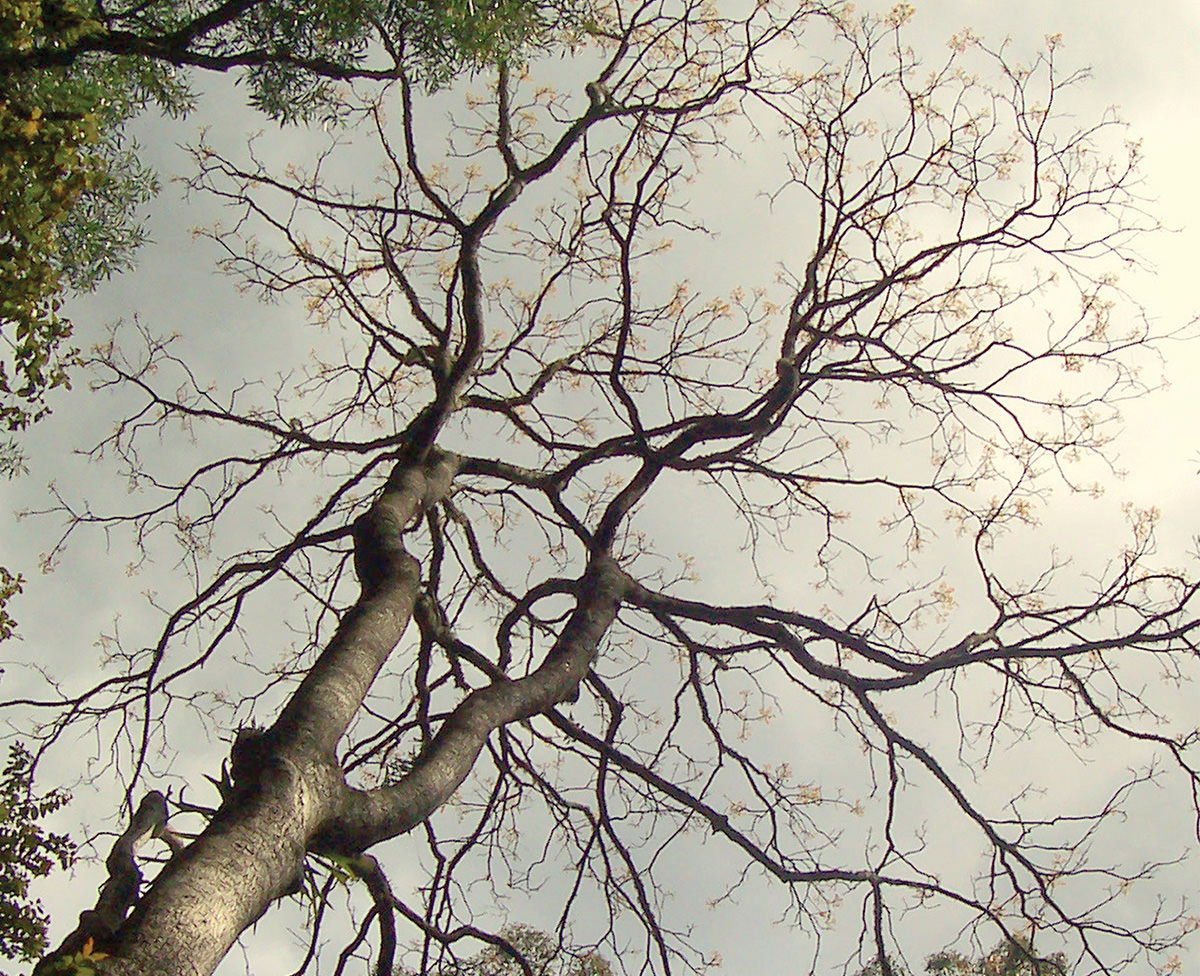
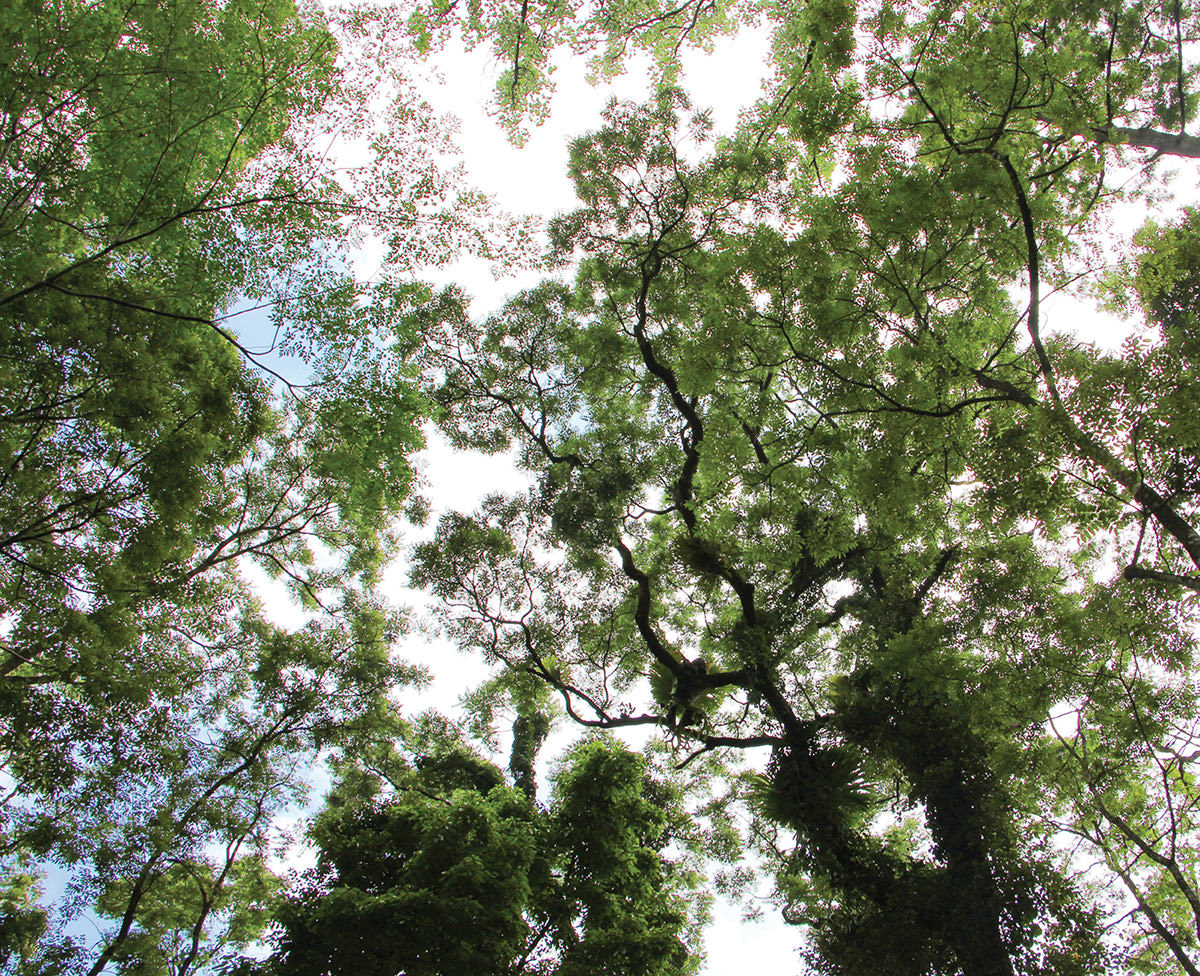
I have a property in the hinterland of the Central Coast NSW. Red cedars grow like weeds there. With the current grave bushfire situation, I have been looking with a fresh eye at the trees on our property near the house. If the house survives the fire season we will take some out and replace with one or two fire retardant trees. As we have a lot of red cedars on the property I was wondering if these were fire retardant like the white cedar. I can’t find any info on it. Can anyone enlighten me?
“Grow like weeds”.. just let them be…
I live here in Wyong and I grow them from seed. Are you out at Yarramalong by any chance???
I would love to see a photo of your cedars. I am researching the tree for a possible book and there are few places which still have them. Most specimens I’ve seen have been planted and they grow into grotesque shapes due to the ravages of the tip moth.
Hi Francis.
I came across a stand of Toona in the national park in the Illawarra .happy to go back and send u a photo if you would find it useful
Any luck finding anyone willing to provide/ sell seeds? I’m looking for some.
Seeds are readily available, I bought mine from Happy Valley Seeds
I live in Tacoma and have 3 large red cedar and many many young plants from a few inches and bigger. I would be happy to give away. I’ve just put a 50cm inside looks great straight and bright green.
Is this Tacoma near Wyong Barry? I had millions of seeds but didn’t have enough potting mix and space to develop a commercial operation
Hi Barry, I live on 70 acres near wauchope nsw. I would like to plant red cedars to replace all the ones that were harvested many years ago.
Hello Francis
I planted a Australian Red Cedar ( Toona ciliata – mahogany family from Castle Hill Forest Nursery ) a sub tropical tree of NSW & Qld in our back yard when we first moved to Hobart Tasmania in 2002. Wasn’t sure how it would grow here in a colder climate but it has thrived , as the the cedar tip moth is not present here , unlike in NSW & Qld , it just keeps getting taller !
est 15 – 20 metres ? Straight central trunk . NO Tip moth attack that I can see.
I had been growing these in Kincumber NSW before moving to Tasmania but they would get to a certain height & the tip moth would attack them affecting their height & central trunk.
Gday, I know its a long time since you posted about the Toona ciliata, but would you recommend where to get seeds or seedlings
Hi there. I am trying to start up the worlds biggest Red Cedar Nursery. I only just saw your post here Jay.
Hi Chris
I will be conducting research on Australian Red Cedar Plantation.
Can you please contact me via email.
https://investmentsap.com/
Thanks
David
We have self sown ones on our small property (15 ha) at Mount View NSW. The property also has an old logging road we found under the lantana. This tells me somewhere in the area are seed-bearing trees. I also have three I planted from the Forestry nursery. They have grown three metres in two years, but dont produce seeds yet.
Have two over 12 m and several offspring which I nurture. I am trying to cram in as many as I can an still have space for a garden 🙂 my other fav is the black bean I have one at 5 m and many in pots waiting for spots. I live in the cc of nsw around 2/3 acre. Lots of Lilly Pilly as well. Thanks for the info.
I have a beauty, she must be over 100 years old. She has an ecosystem all of her own, she is covered in elk and staghorns, orchids etc.
Hi Lindy,
Your tree sounds magnificent. Would you like to share more about her ?
We are a puppet company based in Maleny, doing a show with hand carved local timber rose wood and red ceder caracters. Its a story of the love of forest trees and dwellers. An old ceder-spirit tree is our central piece. We would love to know more about your beautiful ceder and her ecosystem. We are building her at the moment. We will be performing at Mary Cairncross scenic reserve, UQ uni and CREEC Burpengary in May this year.
Looking forward to hearing from you,
Kind regards,
Joey Kohnke
Hi Joanne
We have just had someone from Gold Coast council identifying some trees on our land as we are new to Qld and yes we have red cedars – one of them is huge we had nicknamed the big one as grumpy – every time is floods it drops its leaves !
Happy to send photos if you would like.
How wonderful.
This would be a sight to see
I grow 100’s Cedar of seedlings and they are thriving atm. I’d like to talk with someone please?
Hi Chris. Nice work. Contact details for Land for Wildlife officers are on page 2 of our quarterly newsletters http://www.lfwseq.com.au/newsletters
chris, I would be interested in buying some.Where are you?
I have a old red Cedar (at least 50 years old) very close to the house in the Hunter valley. It causes cracks to my old house. Structure engineer suggested to build a root wall to stop the root from growing but an arborist said as the tree is so old and close to the house, building root wall might kill the tree. However, removing the tree might also damage the house as when the root decay unless the root is not too big. Please advise.
I grow trees here on my farm in south east Qld. I also have a lot of RC regeneration. I take this all rather seriously and have done an inventory of my trees, giving them a number, measuring them, and placing them onto a mud map. So far I’m up to number 773 but there have been a few deaths due to drought. Recently I have been photographing them and placing the photos on line. If the links work you might be able to see some of them here.
https://app.photobucket.com/u/BobWhitworth/a/d35d74c6-a8aa-4a42-baf9-b71f4b88395a
https://app.photobucket.com/u/BobWhitworth/a/83d429a9-e442-447d-8af1-e00cb659d631
https://app.photobucket.com/u/BobWhitworth/a/690c6792-3913-4dd7-bab2-a642437e916b
I would be interested in buy any you cut down. Mark
I grow them too but I usually sell them off. I don’t have any land for them so any left over I plant in the wild. Pretty tough to find a place that never dries out eh
Do you have a retreat Bob? I’m down on the Central Coast of NSW where they grow wild but not as many as yours I have noticed that they need to have about a metre wide trunk for the deep rich red timber
Scientific Name. Juniperus virginiana · Family. Cupressaceae (cypresses) · Description. Eastern red cedar is a small to medium-sized tree, aromatic, evergreen,
We have a beautiful old one on our property in Northern NSW but the previous owners of this property somehow had an accident with a poisons spill just under the tree ( so we have recently found out) and now it seems to be dead. When we purchased the property a year ago we thought it was just deciduous! No growth of new leaves at all with the change of season. It is still covered in staghorns and moss and the birdlife still use the tree as their central meeting place. Do you think there is anything we could do to bring it back to life? Any suggestions would be appreciated, I am happy to send photos.
Hi there. We are researching this tree ( Toona Australis) to put in our backyard and I have been trying to find out if it’s leaves are toxic to goats but can’t find any info. Would anyone here have experience in their livestock eating this tree? Thanks.
Help. I have a red cedar tree that appears to be dying. All the leaves have turned brown or curled up . I have had responses that it needs water to its root rot. I have other cedar trees with no problem . It has been dry but this tree is over 7meters tall and we have had worse conditions over the years . We live in Cedar Creek via Samford 35k north west of Brisbane.
I have recently cleared a guinea grass area on our block and have planted numerous native rainforest trees, including a red cedar. It has grown to approximately 7ft in 12 months